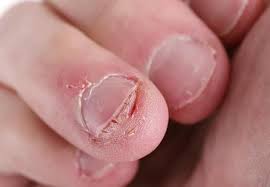

Nail biting also known as onychophagia, is a common oral habit characterized by the repetitive biting of one’s nails.
It is a body-focused repetitive behavior (BFRB) disorder and is often associated with psychological factors such as anxiety, stress, and obsessive-compulsive disorder (OCD).
Typically begins in childhood and can persist into adulthood.
Complications include: nail deformities, infections, and impairment of quality of life.
Clinical manifestations include short nails with ragged distal borders, periungual complications such as absent or ragged cuticles, and potential gingival injuries due to habitual nail biting.
Usually starts in childhood as a nervous habit.
Approximately 33% of children 7-10 years and 45% of adolescents are nail biters.
Differential diagnosis includes psoriasis, onycholysis, lichen planus and trauma.
Complications include nail, cuticle, dental problems with bacterial infections and paronychia.
Exacerbated by physical inactivity.
May be associated with trichotillomania.
Considered by some as an impulse control disorder.
Many patients have anxiety disorders.
Management involves a multidisciplinary approach: including therapies such as cognitive-behavioral therapy (CBT), physical barrier methods, and, in some cases, pharmacological treatments like serotonin reuptake inhibitors (SRIs) for severe cases.
